Relax and recharge anytime, anywhere.
Introductory Talk, 3 Meditations, 77 minutes
US$18
Increase your vitality for health and healing.
Introductory Talk, 7 meditations, 150 minutes
US$35
Prana is the energy at the basis of creation. However, the prana within living beings is a special form of energy. Prana is your vital energy, your life force, and your most precious possession. Prana is vital energy, inner power, and strength. As we learn to feel prāna, we intuitively know what makes us strong and healthy and what makes us weak and sick. Awareness of prana allows us to consciously generate, store, and use prana wisely. Knowing how to cultivate and balance prana is the basis of a more vibrant, creative life.
Prana is a Sanskrit term that refers to the life-force energy that animates all living beings. According to yogic philosophy, prana flows through the body via a network of energy channels known as nadis. Prana is closely linked to the breath, as it is through the breath that we take in and circulate prana throughout our system.
The practice of pranayama, or breath control, is an essential component of yoga and other spiritual practices that seek to cultivate prana. Pranayama techniques involve manipulating the breath in various ways to enhance the flow of prana and balance the body and mind.
By practicing pranayama regularly, one can increase their energy levels, improve their overall health, and deepen their spiritual practice. Different pranayama techniques have various effects on the body and mind, so it is essential to learn from a qualified teacher and practice with caution.
In addition to pranayama, other practices like yoga, meditation, and mindfulness can also help to enhance the flow of prana in the body. By becoming more attuned to the breath and cultivating a deeper awareness of the body and mind, one can access the abundant reservoir of prana that resides within and harness it to fuel their spiritual journey.
01 Talk on Prana
02 Feeling the Five Pranas
03 The Two Forces
04 Psychic Breathing (Ujjayi)
05 The Gross and Subtle Breath
06 Moving the Prana
07 Purifying the channels
08 Prana Nidra
Title: Prana and Pranic Healing – Experience of Breath and Energy
Authors: Dr Swami Shankardev Saraswati and Jayne Stevenson
Content: Intro Talk and Guided Meditations
Media: Mp3
Duration: 150 minutes
Prana, the life force, manifests in the body through breath and energy. Understanding prana and the breath empowers you to generate, store, and utilize your energy efficiently, to achieve better health and fuel your spiritual journey.
This meditation will give you an experience of the five sub-pranas flowing in the pelvis, belly, chest, and head and through the whole body. This will develop an intuitive awareness of how prana feels and moves throughout the body.
You will experience prana in the form of the downward force of gravity and the upward force in the spine. These two forces operate between consciousness at the top of the head and energy at the base of the spine. This dynamic practice helps you to control your pranic energy.
Ujjayi is a controlled yogic breathing technique that is also called throat, psychic or conscious breathing. Ujjayi is practiced by subtly tensing the throat in order to make an extremely soft sound, like the wind in a pipe. This breath carries awareness to the more subtle layers of the being. Ujjayi is used to manipulate prana.
The gross breath is the air you breathe; it is a gross form of prana. The subtle breath is prana itself, the energy that powers all the functions of the living organism, including the gross breath. You will learn to feel the movement of these two breaths and their relationship with each other.
The flow of prana is experienced as a slow pulsation, a natural wave of expansion and relaxation. Posture (asana), breath (pranayama), and awareness are used to move prana through the blockages that prevent its easy flow.
Using the pranic awareness that you have cultivated, you now use the breath to take prana up and down the body, then through the major channels (nadis) that lie on either side of the spine. This process purifies these channels and the whole body-mind.
Best performed lying down, this technique uses the breath to harmonize and integrate prana in all the cells and organs of the body. This creates awareness of the vibration of prana deep within the tissues of the body and prepares the body-mind for higher practices.
I began practicing Swami Shankardev and Jayne Stevenson’s Ajapa Japa meditations several years ago and it has been a turning point in my life. I still find it the most effective practice for calming, balancing and promoting self-expression.
When I first did this practice my throat chakra had been quite constricted for many years. I would feel this energetically when the breath moved through this area of my body. The more I practiced however, the lighter and more liberated my throat felt. These changes were reflected in my daily life. My voice became more confident and I was able to express myself much more freely and openly. I wholeheartedly recommend it!

Dr. Swami Shankardev is an excellent and profound teacher. A humble and thoughtful Yoga Acharya, he addresses his students with a strong desire to share his sacred knowledge in the true spirit of giving. After his visit to Jivamukti, I began to practice Big Shakti’s meditations. I find them extremely helpful, full of wonderful instruction, and deeply soothing.

I would recommend Swami Shankardev and Jayne Stevenson’s workshops and meditations to anyone who wants to incorporate a practice in their daily life that can have profound impact, particularly in terms of shifting longstanding patterns when other techniques have not been successful. Until their workshop, I had not been able to harness the energy required to shift from a long term partnership. Almost immediately on completing the workshop and commencing to use the Core Strength Meditations on a daily basis, I found the energy required to successfully reorganise my professional life. I moved to a new, much happier partnership.

Inner Silence (Antar Mouna) purifies the mind from accumulated negative mental content, memories and emotions. Those are words and promises of what can be experienced with this practice. It was Big Shakti’s meditation that brought this to life for me. I had an “aha! Moment” when practicing.
The benefit of breath, mantra, and flame prior was deep, rich and enlightening. It allowed me to be in a safe, spacious place to witness. The clear instructions enabled me to purify thoughts.
I intend to continue with this practice to get to know myself the very best that I can. Professionally, my clients and students get the flow-on benefit through our collaboration and their own experience of the practices.
Heartfelt gratitude to you both and your teachers.

I wanted to write to let you know how much we appreciate the 3 Easy Steps to Deep Relaxation . It’s just so clear and easy to use. My students report that they find it excellent for calming down and especially effective for anxiety. It’s a great introduction for those who have never meditated before as it breaks the process down into simple, manageable parts.
Listening to the lecture on relaxation is a therapy in itself! My students say they listen to it while driving and find it very informative and soothing. It reminds them to stay relaxed wherever they are, whatever they’re doing, and to keep on practicing!

It is quite evident from the start of using Swami Shankardev’s guidance that these techniques are truly effective. The guided Yoga Nidra complements my own practice in this type of relaxation meditation. Having a “coach” of this calibre to lead me through the territory of the body is a blessing.
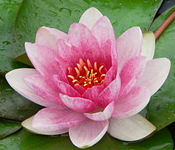
The concepts in your Illuminating Your Heart’s Desire meditations are so powerful, they have started a hugely positive change in my life. I just love the simple but profound ideas you present.
Recently, I bought the CD for a friend as he is wanting to discover his life aim. He was also having ongoing problems with a work colleague and unsure of how to approach them. Before meeting his colleague, he listened to your introductory talk and did the first meditation. He realised he did not need to win or be right, but that he wanted a positive working relationship with his colleague. Because of his clarity, the issues were resolve very quickly and their relationship has taken a positive turn. What a wonderful outcome!

I am collecting all of your meditations because I find them to be the best out there. I have tried many different meditations and apps but they have not been as high quality or effective. I was struggling to get 3 hours quality sleep and my health was really suffering. I was recommended to Big Shakti by Sebastian Pole of Pukka Herbs.
Your meditations are clear, very well annunciated, and the voice itself is very soothing. I listen to one of the five titles every night. My general wellbeing has improved and sleep has stopped being an issue for me.

The expert guidance and unhurried pace of the Prana and Pranic Healing meditations allow the practices to gently unfold into a powerful experience of vitality.
I feel that with each listening my experience of these profound techniques deepens and becomes more available to use in my daily life.
These meditations are an invaluable resource that addresses the needs of both beginner and advance students. Thank you for producing such insightful and clearly communicated work.
Having suffered from acute anxiety most of my life, which culminated in panic attacks and palpitations, I began my yoga journey by developing an awareness of the breath. When I started working with Big Shakti’s Prana and Pranic Healing Meditations my practice went to another level.
I noticed immediate results, my energy was increasing and I wasn’t filled with fear anymore. I feel so much stronger and more grounded. I hardly ever get palpitations now and look forward to a long and healthy life practicing yoga.
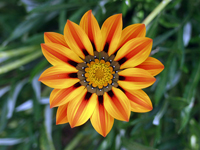
I began the Core Strength Calm Mind practices during a high stress time in my life. As a result of integrating the meditations into my daily practice I have gained a deep understanding of how to develop internal strength, and to feel more grounded and comfortable with my own expression.
At times when I felt overwhelmed and tired, it was extremely helpful to have on hand, the support of the practices to guide me to relax. These meditations taught me how to deal with negativity, how to release pain and tension, how to increase strength and wellbeing. There is a strong focus on healing from within. I have found the practices to be a valuable resource.
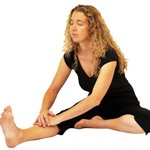
After completing the Core Strength Calm Mind meditations. I feel very clear, sharp, balanced, connected, tall, strong and together. Basically it balances and connects my mind, body and soul so that I feel ready to cope with whatever comes my way for the rest of the day!!
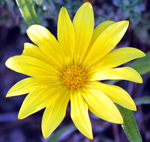
Some time ago I bought your Illuminating your Heart’s Desire meditation. For a short time, I applied it daily, and was really surprised just how quickly the practice helped me to clarify my thoughts and intentions. I no longer need to use the guidance as I now have these skills within me.
I can ask a question or set an intention in meditation while focusing on the relevant chakra. This greatly helps me to gain insight into important aspects for an authentic life, one that is congruent with my innermost needs. It is a beautiful and effective practice – thank you for creating it.
I am finding the guided meditations brilliant! Your service was also very prompt. Thank you for providing these precious teachings.

Many years ago I dabbled in the practice of meditation with limited success, however a friend recommended Dr. Swami Shankardev’s work and it was a game changer. The Yoga Nidra harnessed my attention and helped me to realise my potential at the World Rowing Championships which culminated in a bronze medal in the men’s eights. It’s been a while since I’ve competed internationally but the same skills still resonate. Recently I’ve found that a high proportion of the student athletes I coach find Big Shakti’s Yoga Nidra helps them to focus both on the water and in the classroom. Dr Shankardev is now a bit of a cult hero at high schools in Sydney, Adelaide and even an Ivy League University in the United States.

Swami Shankardev radiates the light and knowledge of his lineage along with a great sense of humour and a certain simplicity and lightness of being. Not a small feat! Big Shakti is a valuable site for all aspiring to yoga, laymen and advanced practitioners alike. Thankyou for the great work!

Thank you for this wonderful Chakras Meditation. I would strongly recommend this to anyone who is interested in authentic meditation and true self-discovery.
These Chakra meditations have guided me to a place were I can see myself in a loving, non-judgmental way. I find this to be very fulfilling. As a result of using this exceptional chakras practice I am more grounded, aware and connected.

I have been using your excellent Yoga Nidra meditation in the evenings to unwind after work. My practice has given me a sense of deep relaxation and afterwards, I have felt rejuvenated and energized for the remainder of my evening.
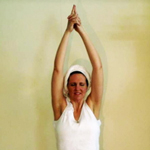
Big Shakti’s Yoga Nidra and Meditation provides effective methods for stress reduction and healing. I have gained noticeable results, including: improved sense of wellbeing, increased inner strength, calmness and serenity, increased stamina, and the ability to deal with stress and life’s challenges.
Although simple, the techniques are powerful, based in authentic tradition of tantric yoga, and thus different from many of the ‘new age’ meditation instructions which have a much more superficial effect on our mind-body system.

What I enjoy about Big Shakti online courses and meditations is their combination of wisdom and practice. They have helped to clarify my understanding of certain yogic terms in the light of modern Western psychology, and thus allowed my practice to become alive, useful and meaningful
As a teacher, I am better able to explain the science behind the techniques, which my very Western students appreciate. There is an urgent need for yogic mind management in today’s society. Once known these techniques can be practiced by everybody no matter what challenge they may be facing from depression to the constant mind chatter. Big Shakti’s courses offer a bridge that Westerners can cross trustingly.

Since practicing your Core Strength Calm Mind meditations I am experiencing an escalation in good health, energy and confidence, and my conscious awareness is expanding.
As a Yoga devotee for 35 years I am convinced, more than ever, that embodying your Teachings is one of the most essential and far reaching processes a Yogi can embark upon. I remain in your debt for this doorway into deeper, profound levels of Self.
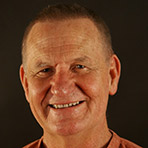
The Chakra Meditation practice with Swami Shankardev is the most clear and delightful I’ve done. The introduction is excellent and it has helped me understand the chakras more deeply.
The rotation of consciousness through the chakras is genius! What a downpour of grace; to hear the beautiful pronunciation of the sweet names of the chakras, but more importantly to truly feel them in our own being!

Dr. Swami Shankardev is both a dynamic Yogi and a brilliant intellectual who embodies a mix of health practitioner and psychotherapist, as well as a sense of humor, which is common only to stand-up artists and team coaches all blended into one; quite an authentic and modern Yogi indeed.
He gave a meticulous, yet informal speech and conveyed a unique sense of what the Yogic lifestyle is really all about with so much energy, enthusiasm, impeccable serenity, and laser-like attention. He dared people to give meditation a chance, at least a try! That was long ago and I have since practiced many of Big Shakti’s meditations and believe they are the most authentic meditations available today and are perfect for aspiring yoga practitioners.
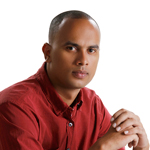
Relax and recharge anytime, anywhere.
Introductory Talk, 3 Meditations, 77 minutes
The most powerful relaxation technique on the planet.
Introductory Talk, 2 Meditations, 67 minutes
Yoga Nidra is the most powerful relaxation technique on the planet!
1 Meditation, 28 minutes
Become mindful, peaceful, and self-aware.
2 Meditations, 32 minutes
"*" indicates required fields
Please log in to submit a question
This website uses cookies so that we can provide you with the best user experience possible. Cookie information is stored in your browser and performs functions such as recognising you when you return to our website and helping our team to understand which sections of the website you find most interesting and useful.
Strictly Necessary Cookie should be enabled at all times so that we can save your preferences for cookie settings.
If you disable this cookie, we will not be able to save your preferences. This means that every time you visit this website you will need to enable or disable cookies again.